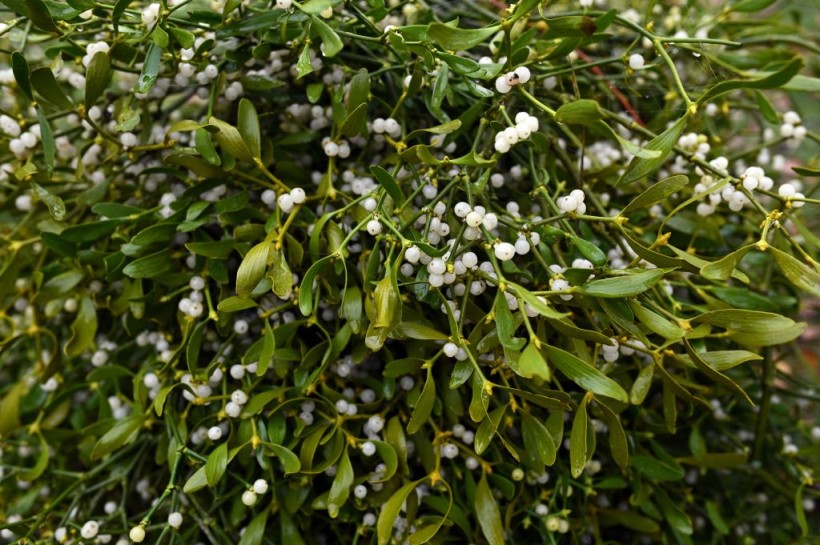Australia is home to the world's largest mistletoe, a parasitic plant that blooms every December with bright orange flowers.
It is commonly known as WA's Christmas Tree, but it also has other names among the Noongar people of southwestern Australia, such as mungee and moodjar.
For the Merningar people of the south coast, mungee is a sacred plant that holds important lore and teachings about how to live in harmony with nature and each other.
A new study, published in the journal PLOS ONE, explored the biology and culture of mungee from both Indigenous and Western science perspectives.
The study was led by three generations of Merningar researchers alongside non-Indigenous scientists.
They used a cross-cultural ecology approach that involved literature review, field visits and workshops.
A sand-loving parasite
 (Photo : OLI SCARFF/AFP via Getty Images)
(Photo : OLI SCARFF/AFP via Getty Images)

Mungee (Nuytsia floribunda) is a mistletoe tree that grows up to 10m tall in sandy soils. It is endemic to southwestern Australia, but widespread throughout, as per Phys.org.
It is a parasitic plant that attaches its ring-shaped roots (haustoria) to other plants and extracts water and nutrients from them. It can parasitize a wide range of plants, from grasses to shrubs to trees.
Mungee has a remarkable ability to access resources from different sources, which enables it to thrive in the infertile and diverse landscapes of southwestern Australia.
This is also the case for Noongar people, whose traditional diet reflects the richness and variety of their Country.
A revered teacher offering divine guidance
Mungee is more than just a plant for Noongar people. It is a powerful medium that helps restless spirits move on to the afterlife, known as Kuuranup.
It also tells stories about how humans relate to each other and to the world around them, similar to a cornerstone religious text such as the Christian Bible.
Mungee is a place-based teacher that reveals its lore through where it lives, the plants it lives with, and when it flowers.
It teaches Noongar people about respect, reciprocity, resilience and responsibility. It also teaches them about treading lightly on the land and living sustainably.
For example, mungee flowers only when there is enough rain and moisture in the soil.
This signals to Noongar people that it is time to harvest its sweet nectar, which can be eaten raw or fermented into a drink.
However, they only take what they need and leave some for the bees and birds that pollinate the plant.
Mungee also teaches Noongar people about caring for Country and each other.
For instance, mungee can heal wounds and infections by applying its sap or leaves. It can also heal relationships by offering its flowers as a gift or apology.
Also Read: Mistletoe's Flexible Fibers Can Be a Biological Adhesive According To Study
Implications for conservation and biotechnology
The study highlights the value of mungee from both Indigenous and Western science perspectives. It shows that mungee has a unique biology that makes it adaptable to different environments and conditions, as per the Australian Geographic.
It also shows that mungee has a rich culture that makes it meaningful to Noongar people and their way of life.
The study suggests that conservation policies need to take into account the cultural significance of mungee for Noongar people and their knowledge of its ecology.
It also implies that biotechnology could benefit from exploring the potential uses of mungee's complex and diverse venoms, which contain thousands of unique peptides with various biological activities.
By revealing how mungee is both a parasite and a teacher, this study provides valuable insights for further understanding and appreciation of the role of mistletoes in nature and culture.
Related article: Mistletoe Fights Liver Disease? Not Just For Kissing
© 2024 NatureWorldNews.com All rights reserved. Do not reproduce without permission.




![Roundworms with Short Memories 'Stop Forgetting' When Frozen or Given Lithium [Study]](https://1471793142.rsc.cdn77.org/data/thumbs/full/70295/280/157/50/40/roundworms-with-short-memories-stop-forgetting-when-frozen-or-given-lithium-study.jpg)
